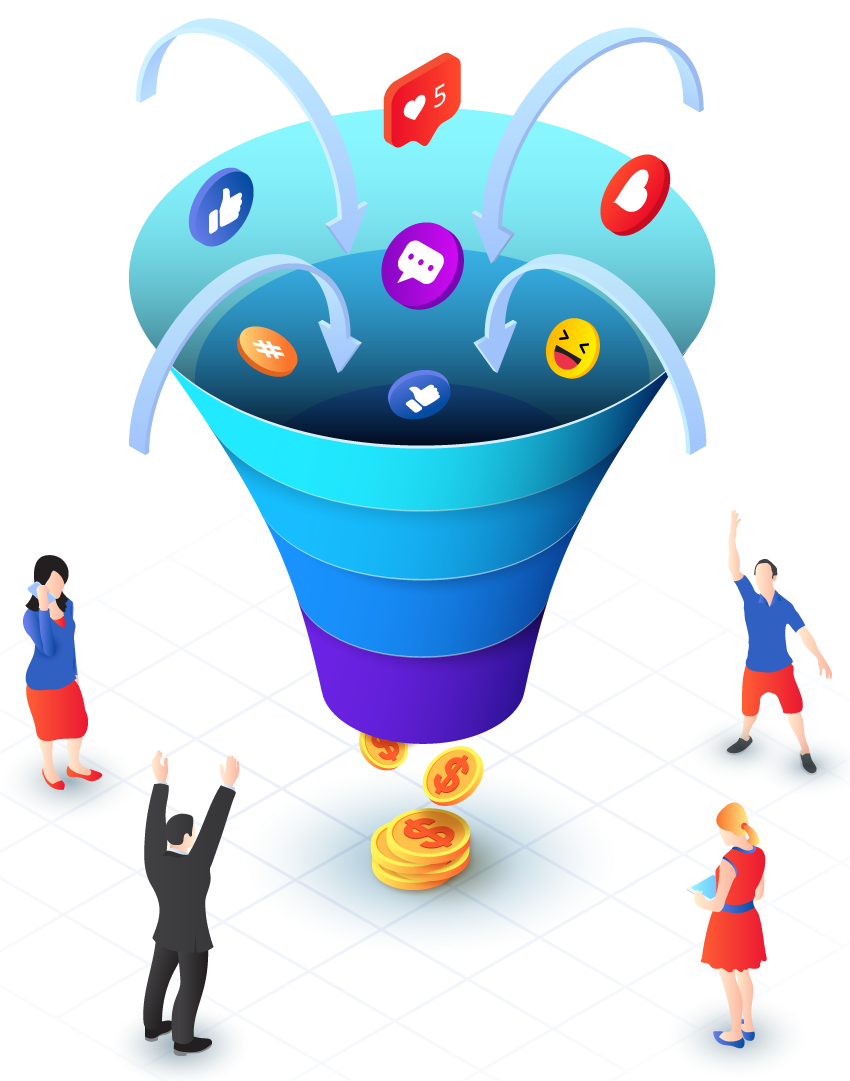Why Sales Funnels Are Essential for Modern Businesses
Whether you own an online shop that sells ebooks or a brick-and-mortar store that specializes in outdoor sports gear, sales funnels can help your company reach more customers and boost revenue. These marketing tools systematically nurture leads from awareness to purchase and repeat business, increasing the value of each customer for your business.
They also help you identify the most effective marketing strategies by shedding light on actionable data at each stage of the sales process.
The top of the sales funnel begins with awareness, the broad mass of prospective clients that you target with advertising as they learn about your brand.
You can use online ads, content marketing and cold calls to raise awareness about your products or services. For example, a retail shop may run Facebook ads targeting outdoorsy people, encouraging them to enter the store for a chance to see and try on some of its summer dresses.
Once prospects are aware of your product, they enter the middle of the sales funnel, where they evaluate your offerings and choose to continue engaging with your brand by requesting more information.
At this stage, you can use targeted email campaigns to provide a more detailed look at your product features and benefits, as well as pricing and delivery options. Your objective is to demonstrate that your business is a trusted source of industry knowledge and expertise.
This is a crucial point in the sales process, and one where it’s easy for qualified prospects to fall through the cracks. You can improve your conversion rate by providing content that addresses common pain points and questions, demonstrating how you’re uniquely qualified to help solve them.
Once prospects have moved through the middle of the sales funnel, you can engage with them to offer demos or trials, or even more personalized email campaigns that speak directly to their specific needs and interests. You can also leverage sales funnel data to understand what types of content work best for your prospects, helping you create more engaging materials to attract them at the top of the funnel.
Continually monitoring sales funnel metrics allows you to fine-tune your marketing strategy, improving performance at each stage of the process. You can measure a variety of key indicators, including entrances, the number of leads that move to the next phase of the funnel and the percentage of leads that ultimately make a purchase.
You can also keep an eye on average deal size, which helps you determine if your product or service is best suited to large-scale buyers or a more frequent series of smaller transactions.
You can also analyze the time it takes for leads to move through each phase, identifying areas of opportunity or concern. All of this can be easily accomplished with free pipeline management software. This makes it easier than ever to monitor and optimize your sales funnel for the most success.

Free Training video
How To Transform Your Online Business with Our Universal Sales Funnel Template
My Recent Posts
All-in-One Sales Automation Platform
Check out my recent post on all-in-one sales and marketing tools and what I think of it.
Sales Funnels
Check out my recent post on sales funnels and what I think about them. Are they still worth it?

The Same "about me" text you wrote on your about me page; you want to write it here or write an excerpt of it here. Just make sure it makes sense, and looks complete if you're going to write an excerpt. So delete this text and add yours on every article page.
Edgard Manuel
©Copyright 2024 Small Business Hero LLC
1317 Edgewater Dr. #519
Orlando FL 32804
